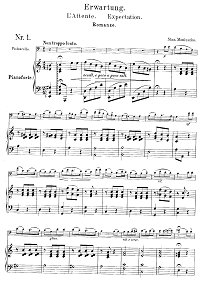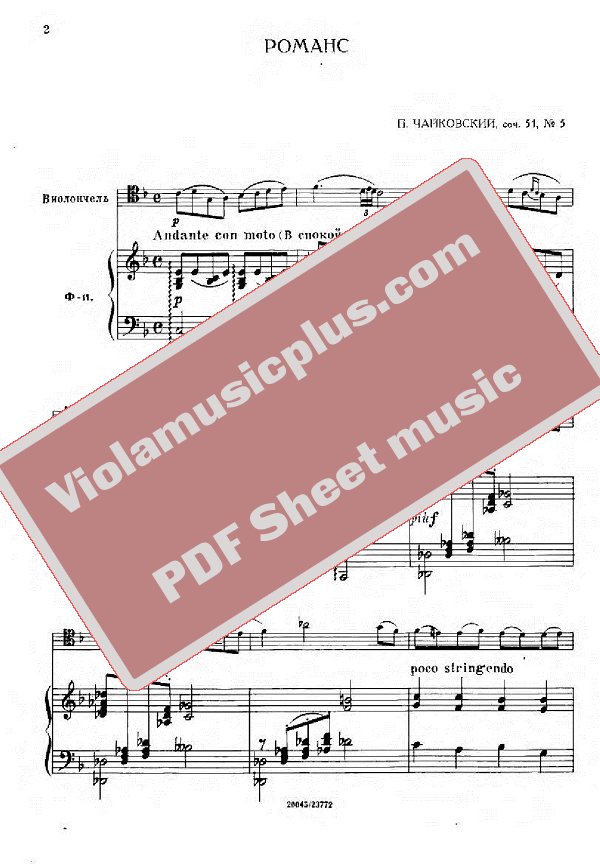

As this edition has not been published in full there are works without an NA designation. However, only 42 of the projected 56 volumes have been published so far.
#Romantic cello repertoire archive
Since 1961 the Beethoven Archive has been publishing a new scholarly–critical Complete Edition of Beethoven's works, Beethoven: Werke: neue Ausgabe sämtlicher Werke. Between 19 Willy Hess prepared a supplemental edition, Beethoven: Sämtliche Werke: Supplemente zur Gesamtausgabe, containing works that were not in the Gesamtausgabe. While this was a landmark achievement at the time, the limitations of this edition soon became apparent.

List of works by genre Beethoven, caricatured by Johann Peter Lyser īeethoven's works are published in several editions, the first of these was Ludwig van Beethovens Werke: Vollständige kritisch durchgesehene überall berechtigte Ausgabe published between 18 with a supplemental volume in 1888 by Breitkopf & Härtel, commonly known as the " Beethoven Gesamtausgabe". While other catalogues of Beethoven's works exist, the numbers here represent the most commonly used.

The listings below include all of these relevant identifiers. For example, the 14th string quartet, published as Opus 131, may be referenced either as " String Quartet No. Works are also often identified by their number within their genre. Some works are also commonly referred to by their nicknames, such as the Kreutzer Violin Sonata, or the Archduke Piano Trio. For example, the short piano piece " Für Elise" is more fully known as the "Bagatelle in A minor, WoO 59 ('Für Elise')". Many works that were unpublished or published without opus numbers have been assigned one of " WoO" ( Werke ohne Opuszahl-works without opus number), Hess or Biamonti numbers. Only 172 of Beethoven's works have opus numbers, divided among 138 opus numbers. The best-known numbering system for Beethoven's works is that by opus number, assigned by Beethoven's publishers during his lifetime. īeethoven's works are classified by both genre and various numbering systems. Although his output greatly diminished in his later years, this period saw the composition of masterpieces such as the late string quartets, the final five piano sonatas, the Diabelli Variations, the Missa Solemnis and the Ninth Symphony. Beethoven's work is typically divided into three periods: the "Early" period, where he composed in the "Viennese" style the "Middle" or "Heroic" period, where his work is characterised by struggle and heroism, such as in the Eroica Symphony, the Fifth Symphony, the Appassionata Sonata and in his sole opera Fidelio and the "Late" period, marked by intense personal expression and an emotional and intellectual profundity. His compositions range from solo works to those requiring a large orchestra and chorus.īeethoven straddled both the Classical and Romantic periods, working in genres associated with Wolfgang Amadeus Mozart and his teacher Joseph Haydn, such as the piano concerto, string quartet and symphony, while on the other hand providing the groundwork for other Romantic composers, such as Hector Berlioz and Franz Liszt, with programmatic works such as his Pastoral Symphony and Piano Sonata " Les Adieux". Beethoven composed works in all the main genres of classical music, including symphonies, concertos, string quartets, piano sonatas and opera. The compositions of Ludwig van Beethoven consist of 722 works written over forty-five years, from his earliest work in 1782 (variations for piano on a march by Ernst Christoph Dressler) when he was only eleven years old and still in Bonn, until his last work just before his death in Vienna in 1827. However, everyone would agree that these are some of the most important milestones and gems in the cello music collection.See also: Catalogues of Beethoven compositions Title page of Beethoven's symphonies from the Gesamtausgabe As said before, it is not a definitive list undoubtedly, every cello-lovers’ list will differ significantly.

So, here are some of the most famous and finest cello pieces ever written in music history. Overall, it is a truly unique cello piece. With great pathos, depth, and richness of tone, the concerto also features wit and playfulness in the next movements with some swing and Spanish rhythm influences. The concerto is both a whimsical piece and a passionate rhapsody. The concerto features many contrasting sections, with the orchestra accompanying, playing great hits and flourishes, while the solo cello drives the melancholy melody forward. Written in 1877, the concerto is famous for its bold and striking opening phase with high lyricism and emotionality. “Cello Concerto in D Minor” by the visionary and thoughtful composer Edouard Lalo is a highly interesting and moving concerto for cello, which resembles the work of Beethoven.


 0 kommentar(er)
0 kommentar(er)
